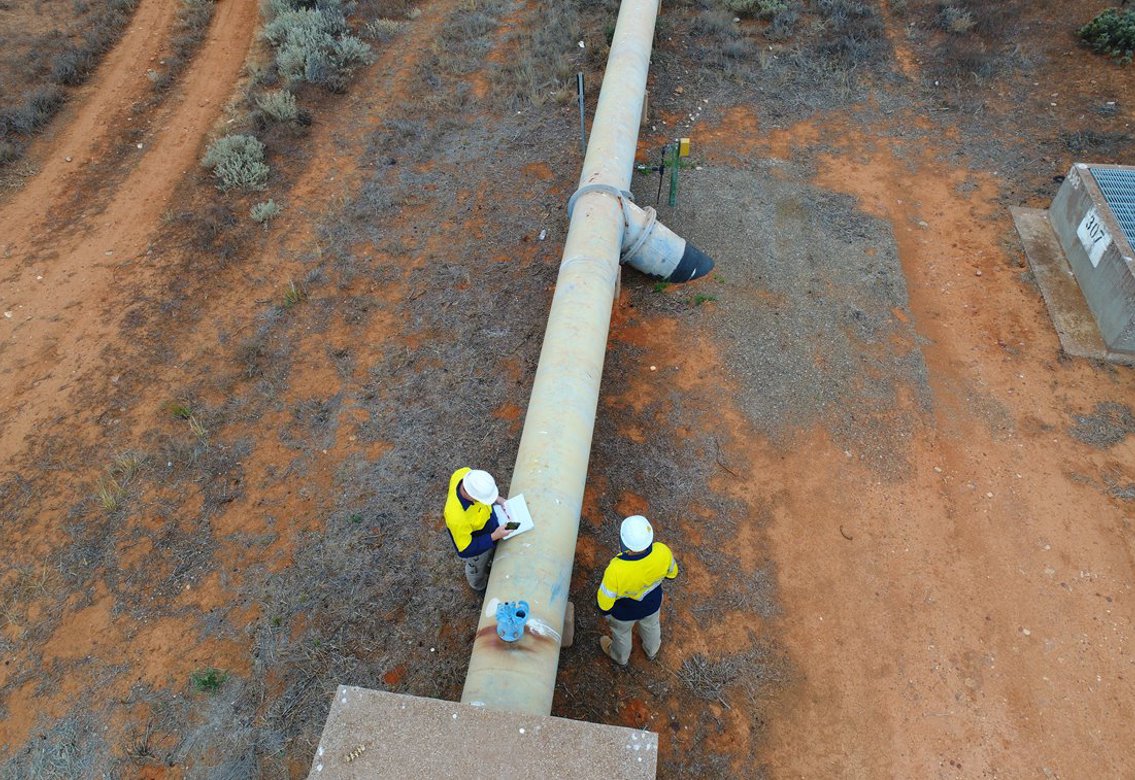
Pipeline Testing in Action
Corrosion is a significant contributor to gas and oil pipeline failures. That is why many oil and gas companies implement chemical treatment methods to eliminate corrosive contaminants within gas pipelines. But chemical efficiency can be drastically affected by improper injection methods.
Choosing the proper method of dispersion and distribution within the system is critical to maximizing chemical use.
The Shield sat down with Bryan Stockburger, Sentry Equipment's Regional Sales Manager, to discuss atomizers and how they can help oil and gas producers optimize their chemical treatment plan.
The Shield (TS): What are atomizers?
Bryan Stockburger (BS): An atomizer turns liquid chemicals into a fine mist – more like a fog – and is used to inject various chemicals into a gas pipeline. The atomizer is attached to the process then utilizes a nozzle to inject and disperse the chemical as a fog—the finer the mist, the better the dispersion as it carries through the process.
TS: How do atomizers prevent corrosion in a gas pipeline?
BS: Atomizers are often used to introduce scavenger chemicals that help mitigate corrosive contaminants, including hydrogen sulfide (H2S), carbon dioxide (CO2), oxygen (O2), water (H2O) and microbial organisms.
For example, to prevent pipeline freeze, it is common to inject methanol into the pipelines via an atomizer to prevent the freezing of water and precipitation of hydrates that are common in gas pipelines.
Proper atomization of scavenger chemicals creates a fog of chemicals. Utilizing this dispersion method allows the chemicals to have maximum coverage of the gas inside the line.
Methods that drip the chemicals into the line limit the amount of gas contacted by the chemical which requires rates to be increased to achieve the desired mitigation.
When customers use less than optimal injection methods, they will see increased chemical usage or contaminants not being mitigated within the line. These methods can cause increased production costs and could potentially lead to a catastrophic failure.
TS: What is the difference between a quill, a mixing probe and an atomizer?
BS: Using a check valve or tubing to inject a chemical into a line doesn't make it an atomizer.
An atomizer distributes chemicals through a fine mist which, causes the liquid to mimic the gas being treated. This allows the velocity of the gas to help disperse the chemicals in the system.
One common issue we see in the field is customers trying to atomize into liquids and it just doesn’t work!! You can only atomize into gas. Also, for true atomization to occur, at least eight gallons of chemical per day is needed.
For injection points requiring lower rates, there are options available. These options deliver the chemical in streams or spray patterns. The larger droplets don’t allow the optimal dispersion like an atomizer but are still preferable over just dripping the chemical into the process.
Either a mixing probe or a quill should be utilized when injecting into a liquid process for optimal chemical dispersion.
TS: How do atomizers help control chemical usage?
BS: Proper atomization allows a customer to use less chemicals to achieve their mitigation goals. That's because the atomizer is reducing the chemical to finer droplets to more efficiently treat gas in the pipeline, which reduces the number of chemicals needed to treat that gas efficiently.
Chemicals are heavier than gas so if not introduced as a fog, they'll quickly fall to the bottom of the line. This severely limits the chemical to gas contact. Without proper dispersion and contact time, the chemical won't mitigate the issue correctly.
For example, if you have a 4-inch pipeline and you disperse a chemical via a check valve, like a water faucet dripping, the only gas it's treating is what that drop physically touches as it's falling to the bottom of the line. In that 4-inch pipeline, there might be 2 million cubic feet of gas flowing through every minute – which means the chemical is missing a lot of that gas as it goes to the bottom of the pipeline and remains there.
But if you are atomizing optimally, the entire column of gas is getting treated as it goes by because the droplets are finer and no gas is passing the injection point without chemical contact.
It's the difference between painting a house using a two-inch brush or using a sprayer - much broader coverage.
TS: How can an atomizer reduce chemical costs?
BS: Chemical usage is the #1 cost to most producers. It's estimated that optimizing chemical usage using methods such as atomization can result in immediate financial savings of 10%-30%. This is simply because optimal dispersion of the chemical allows more contact with less.
TS: How do I optimize atomization?
BS: Optimal atomization requires proper differential pressure. Achieving the proper differential pressure and atomization requires the correct equipment for your application, including:
- The right size chemical injection pump
- A pulsation dampener (accumulator)
- The proper atomizer for the application.
- The right size nozzle for the targeted chemical rate.
- A carefully chosen injection location to allow the chemical contact time.

Written by Sentry Equipment
With proven sampling expertise since 1924, Sentry products and services provide business operations the critical insights to optimize process control and product quality. We deliver true representative sampling and analysis techniques to customers around the globe, empowering them to accurately monitor and measure processes for improved production efficiency, output and safety. Standing behind our commitments, we are determined to tackle any application, anywhere.
Related Posts

Corrosion
PHMSA Mega Rule: Your Guide to Navigating the New Regulations
The pipeline Industry has heard a lot about the Pipleine and Hazardouse Materials Safety Administrations (PHMSA) three rules to reduce the frequency of pipeline failures. Now, the third and final rule has been released.
Read More
Corrosion
Internal Corrosion Monitoring: What You Need to Know
Pipelines carrying oil and gas experience internal corrosion when water is present inside the lines.
Read More
Corrosion
How to Choose Your Internal Corrosion Mitigation Method
Internal corrosion monitoring is critical to preventing and addressing corrosion inside gas and oil pipelines. It is also the first step in choosing the right corrosion mitigation method based on identified corrosive constituents.
Read More